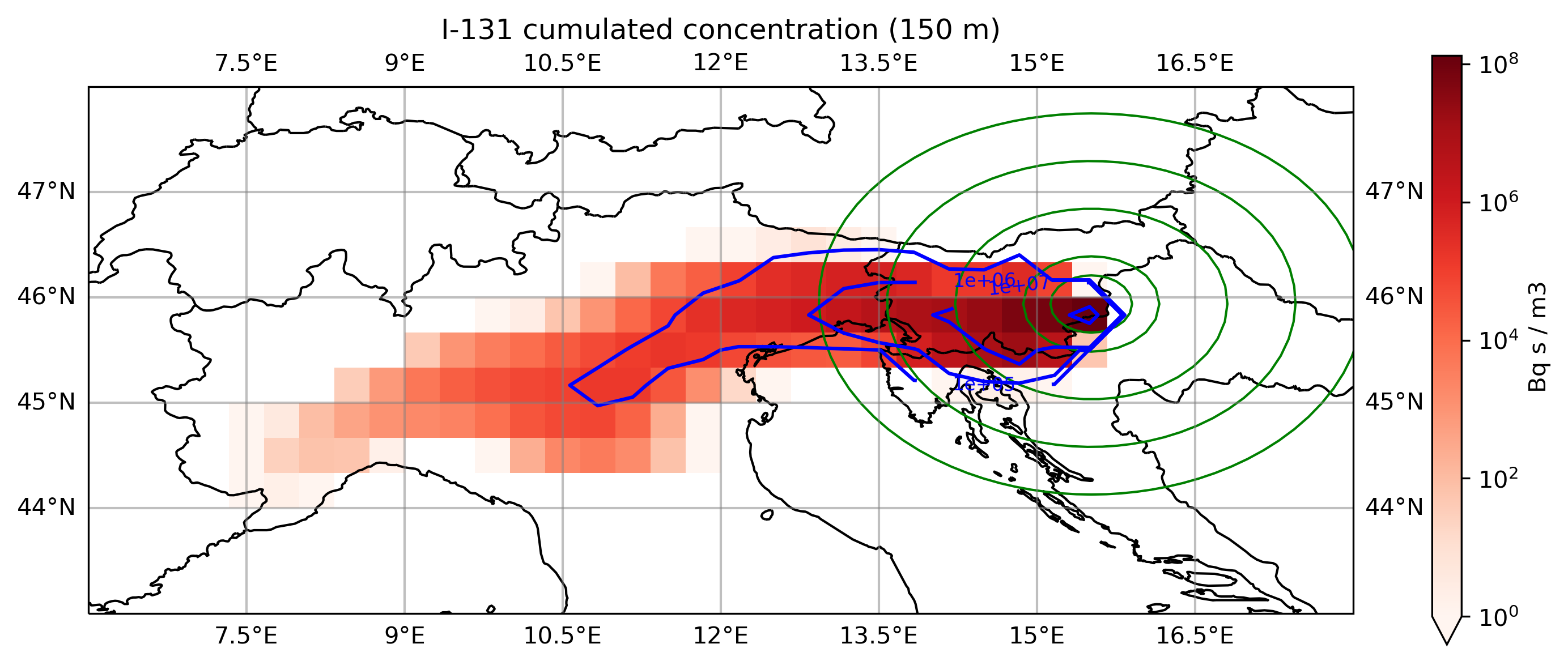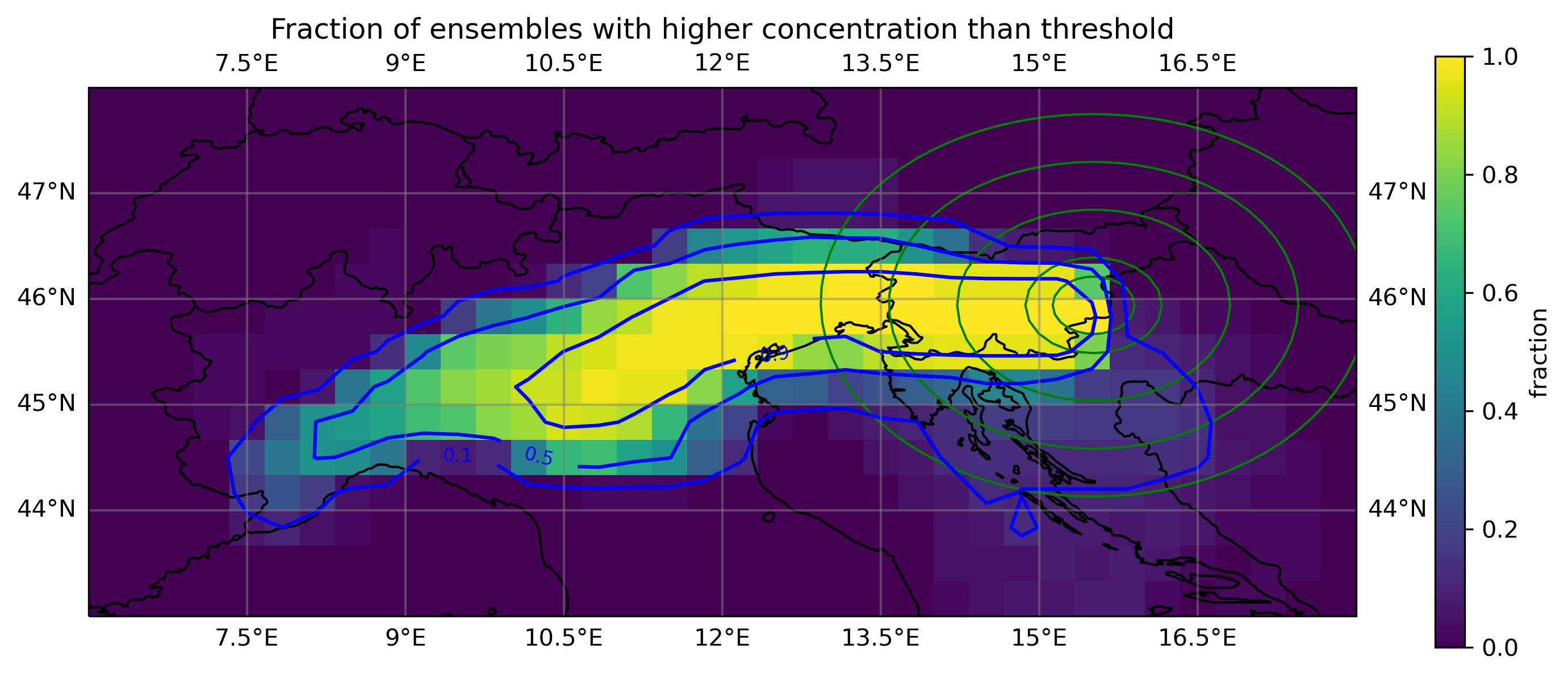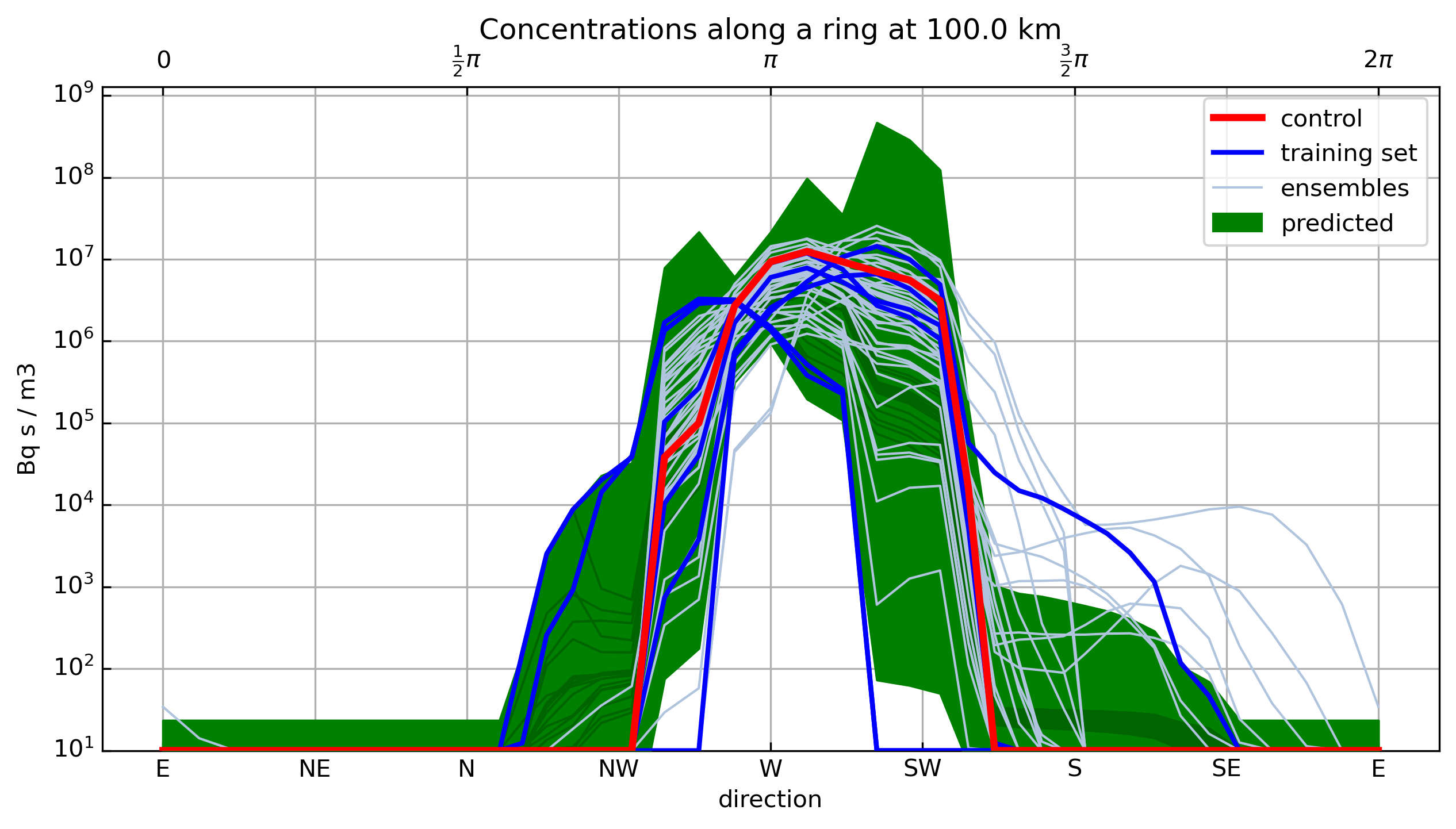A surrogate model for atmospheric dispersion in emergency situations leveraging ensemble weather forecasts
Ensemble weather forecasts can be very useful in properly predicting the dispersion of radioactive material in an accident, but they are very expensive to use. In emergency situations, when decisions must be taken rapidly, the use of ensemble data is still off limits due to the computational cost that it would involve.
We present a surrogate model, based on Gaussian Progress Regression (GPR), that tries to recover the information that can be gained by using the ensemble forecast (e.g. statistical variables such as mean value, variance and quantiles) while still being fast enough to be used in emergency situations.

The model has been developed using a set of simulations, performed with FLEXPART 10, that all prescribe an arbitrary source term of 1e16 Bq of I-131 released from the NPP in Krško. The reference calculation is shown in the picture for the selected date.

All the 50 members of the ensemble forecast data provided by ECMWF have been used to understand how the behavior of the dispersion cloud changes varying the weather fields. The results are shown in the picture, where each cell is colored based on how many members of the ensemble give a value above a selected threshold (in this case 5.5e5 Bq s / m3, that roughly correspond to 0.1 mSv dose to the thyroid). In order to minimize the number of calculations used to build the surrogate model, the ensembles have been given a score based on how far from the reference the wind field are along the trajectory of the maximum of the concentration. In this way, even using a reduced number of ensemble members (6 in the following), the spread is properly accounted for.

The Gaussian Process Regression is then trained on this reduced set of ensembles (that can even be employed progressively) in order to reconstruct the information from the whole set of ensembles. The results along a circle at 50 km from the release point are shown in the figure: the red line is the reference computation, while the blue lines are the training set selected above. The green band is the result of the GPR methodology, that gives a good approximation of the spread of the ensemble (in light blue). In particular, it can be seen as a relevant part of the ensembles predict a bell curve with the maximum that is oriented further north than the reference, and this behavior is properly captured by the uncertainty bands of the surrogate model.
Antonio Cervone
ENEA
antonio.cervone@enea.it